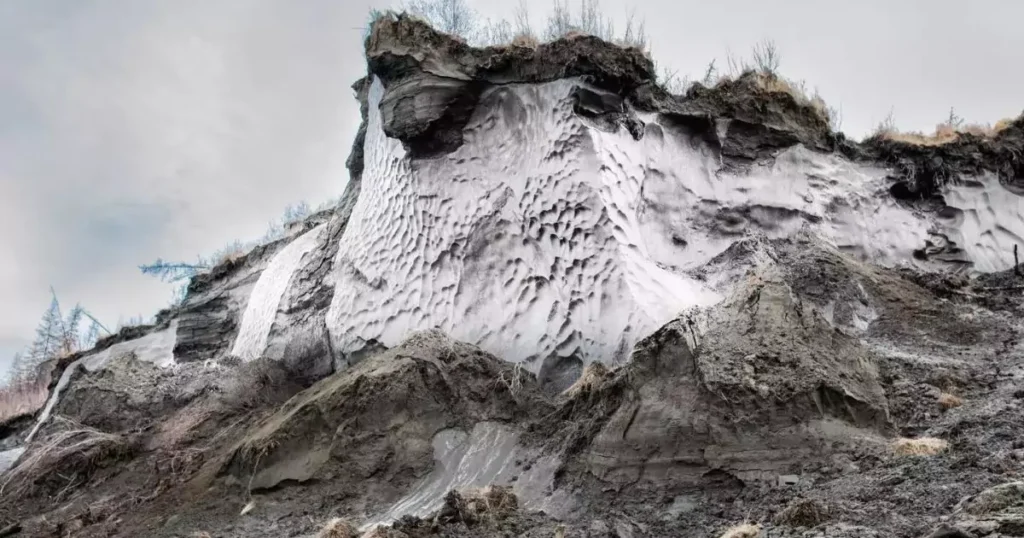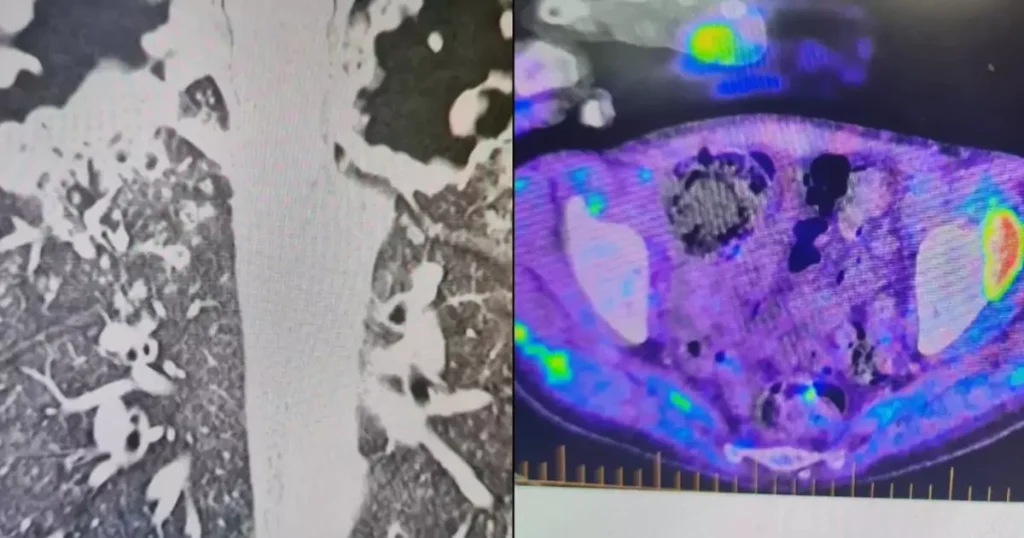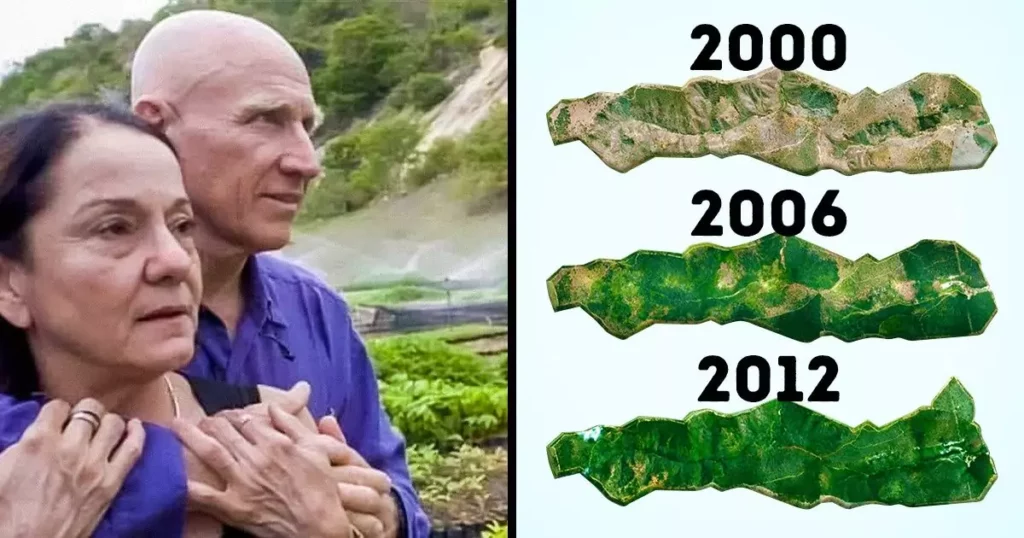
In the remote expanses of Siberia lies a geological phenomenon that has captured the attention and concern of scientists worldwide: the Batagay Crater, ominously nicknamed the ‘Gateway to Hell’. This rapidly expanding megaslump, officially known as the Batagay Crater, presents a striking visual reminder of the profound changes occurring in our planet’s climate. As it continues to grow at an unprecedented rate, the implications for the local environment and global climate patterns are significant.
The Origins of the Batagay Crater
The Batagay Crater first came to the attention of the scientific community in 1991, thanks to satellite imagery that revealed a significant collapse of a hillside in the Yana Uplands of northern Yakutia, Russia. However, local knowledge and lore suggest that its formation began much earlier, around the 1960s, when the region experienced significant deforestation. This human activity likely contributed to the initial destabilization of the permafrost, setting the stage for the crater’s formation.
Geological Features and Initial Shape
Initially described as tadpole-shaped, the Batagay Crater has dramatically transformed over the decades. Its growth is not just a matter of increasing size but also involves changes in shape and depth. What was once a relatively small depression has now become a sprawling megaslump, measuring 3,250 feet (990 meters) wide as of 2023, up from 2,600 feet (790 meters) in 2014.

The Science Behind the Growth
The primary driver behind the Batagay Crater’s expansion is the thawing of permafrost, a layer of permanently frozen soil and rock that dominates much of the Arctic landscape. Rising global temperatures, particularly pronounced in the polar regions, are causing this permafrost to melt at an accelerated rate. As the permafrost thaws, the ground becomes unstable, leading to further collapses and the expansion of the crater.
Greenhouse Gas Emissions
The melting of permafrost is not just a local issue; it has global ramifications. One of the most concerning aspects of this process is the release of greenhouse gases. Permafrost acts as a carbon sink, storing vast amounts of organic carbon. When it thaws, this carbon is released into the atmosphere, contributing to the greenhouse effect and further accelerating global warming. According to recent studies, approximately 4,000 to 5,000 tons of previously permafrost-locked organic carbon are released annually.

Environmental and Climatic Impact
The expansion of the Batagay Crater and similar phenomena pose significant risks both locally and globally. Locally, the increasing thaw can lead to more extensive erosion, altering landscapes and potentially destroying habitats. This erosion can also release ancient pathogens, trapped in the permafrost for millennia, posing unknown risks to modern ecosystems and human health.
Globally, the release of greenhouse gases from melting permafrost contributes to a feedback loop that exacerbates climate change. As more carbon is released, global temperatures rise, leading to more permafrost thawing and even greater carbon emissions. This cycle poses a severe threat to efforts aimed at mitigating climate change.
Predictions and Future Outlook
Experts predict that the situation will worsen as global temperatures continue to rise. Professor Julian Murton, a geologist at the University of Sussex, has warned that the Batagay Crater offers a glimpse into both past climatic conditions and the likely future. He predicts more slumps, gullying, and erosion as the permafrost continues to thaw, leading to increasingly unstable land surfaces across the Arctic region.
Health and Travel Insurance Considerations
Given the remote and challenging environment of Siberia, proper health insurance is crucial for anyone visiting or conducting research in the region. Health insurance plans that cover emergency medical evacuation and treatment are essential, given the limited medical facilities and the potential for serious health risks posed by exposure to extreme cold, remote locations, and potential hazards associated with geological research.
Travel insurance is equally important for those venturing to the Batagay Crater or other remote Arctic locations. Policies should cover trip cancellations, interruptions, and lost or delayed baggage. Additionally, coverage for adventure activities is advisable, as many insurance plans exclude high-risk activities commonly associated with exploration and scientific research in these areas.
Mitigation and Adaptation Strategies
Ongoing scientific research is crucial to understanding the full implications of the Batagay Crater’s growth. Monitoring programs using satellite imagery and on-the-ground measurements help track changes in the crater’s size and shape, providing valuable data for predicting future developments. Researchers are also studying the composition of the permafrost to better understand the potential carbon release and its impact on global climate patterns.
Engineering Solutions and Community Adaptation
In addition to scientific research, engineering solutions and community adaptation strategies are being explored to mitigate the impact of permafrost thawing. These include building infrastructure that can withstand unstable ground conditions and developing methods to refreeze permafrost in critical areas. Community adaptation efforts involve educating local populations about the risks and developing strategies to cope with changing environmental conditions.
References and Further Reading
For those interested in learning more about the Batagay Crater and its implications, a range of scientific studies, articles, and monitoring programs offer in-depth information. Notable sources include research publications from climate scientists, geological surveys, and environmental organizations dedicated to studying Arctic regions. Additionally, staying informed about the latest developments in climate science and policy can help individuals and communities better prepare for the changes ahead.
The Batagay Crater, or the ‘Gateway to Hell’, is more than just a dramatic geological feature; it is a stark reminder of the profound changes occurring in our planet’s climate. As it continues to grow, it provides a unique opportunity for scientists to study the impacts of permafrost thawing and to develop strategies to mitigate its effects. The lessons learned from the Batagay Crater will be crucial in our efforts to understand and combat the broader challenges of climate change, highlighting the need for global cooperation and innovative solutions.
Featured Image Credit: Alexander Gabyshev, Research Institute Of Applied Ecology Of The North/Alexander Kizyakov, Lomonosov Moscow State University

























































































































